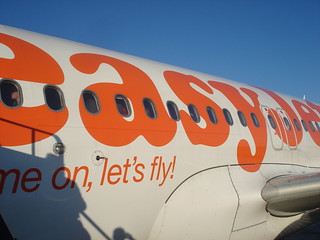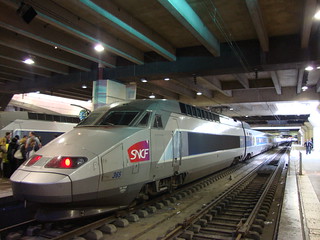When I was in Romania last month, it was my first time flying since the summer of 2010, and I can’t say I missed the experience. That previous occasion included a missed connection in London and the loss of baggage which only arrived at my destination in Spain two days later.
Even with low expectations of my forthcoming flights in Romania I was still disappointed. Other travels in the past few years, including sleeper trains and gorgeous European high-speed services, have confirmed in my mind that the train beats the plane hands down.
Here are some reasons why.

1. Security
The evidence that the security procedures at airports are intrusive and unnecessary lies in the security you have to go through at the Eurostar terminals. Yes, there are scanners to check every body and bag that passes through, but it is swift, simple and uncomplicated.
Nobody at Eurostar thinks that your deodorant or toothpaste is a security risk in normal sizes. Nor do Eurostar believe that water – which covers 70% of the world’s surface – is a danger to the integrity of the trains.
It’s great to be able to pack for the train knowing you can take whatever you like.
2. Baggage size
Just as there is no unreasonable restriction for security reasons on trains, neither are there any of the weight restrictions that planes often put down. On many airlines, for perhaps understandable fuel consumption reasons, you cannot put more than 25kg in the hold. Any more, and you pay a hefty surplus. Any weird bags or funny straps, and you’re off to the outsize baggage like a naughty pupil sent off to the headmaster – and why is the outsize baggage desk always a massive hike away?
No, instead, with the train you can just take as much as you can carry. Our recent rail trip around Europe saw us lug a rucksack that was entirely camping gear, a large suitcase with all our clothes, and three smaller bags. We’d never have managed all that by plane without paying surcharges; but as far as the trains were concerned, as long as we could physically carry them we were fine.
Certainly there are problems with luggage on trains – there are many horror stories about trying to take bikes, for instance – but any problem would be magnified in terms of cost and inconvenience if it happened with air travel.
3. Space and comfort onboard
On a plane, you’re wedged into tiny seats, usually next to strangers, with uncomfortable amounts of legroom, unless of course you’re rich enough for the absurd first class prices (which on budget airlines of course don’t exist). You can get out and move about, but once you’ve disrupted the people sitting between you and the aisle, there’s not a lot of space to move around anyway, even if you can cope with the bumps and turblence.
On the train, there’s a bit more space to move around, and on longer-distance trains there are restaurant or buffet cars that allow you to breathe and stretch your legs, as well as get some food that is usually better than that of the plane. There’s even more space in first class, where the price differential between standard and first is never in the region of that of airline tickets.

4. Location, location, location
Trains are nearly always city centre to city centre. Planes are nearly always a good twenty or thirty minutes outside city centres, often more in the case of budget airlines. This makes a huge difference to the convenience, cost and time.
For instance, It’s all very well telling me it’s about an hour and a half to fly from Inverness to Gatwick, for instance.
But it’s about twenty-five minutes on the bus from Inverness city centre to the airport, and then you consider that buses are not always so regular and the fact that you need to be there a good forty minutes before the flight (more if it is an international flight), hanging around in atmosphereless airport terminals twiddling your thumbs and staring at duty-free items you probably don’t have space in your bags for. Then at the other end it could be as much as an hour to pick up your baggage and then get the train into the centre of London.
This could add up to as much as three or four hours as a total journey. Given it’s eight hours to London on the daytime rail service, it’s not much of a boast that the plane is only twice as fast as the train. When you bring sleepers into the equation, it’s effectively “dead” time, meaning you can start your journey in the early morning in London, and be in southern France by evening.
5. The cost
Trains can be just as cheap as planes, if not more so, especially when booked in advance. And when you consider the cost of food at dull, soulless terminals while waiting for your flight, or the cost of baggage excess, rail or bus transfers, and everything else that might trip you up along the way, the cost of flying adds up. And then there’s the environmental cost.
In short, train beats plane hands down in my view. Why opt for cattle class when you could sit back and watch beautiful scenery fly by? Yes there are problems with our rail network here in Britain, and there is much that could be done to make it a better value experience. But my most recent flight simply confirmed what I already knew – it’s rail all the way for me.
Any thoughts out there either way?


